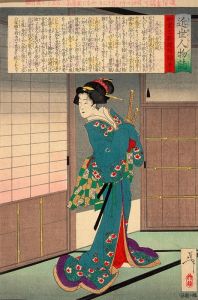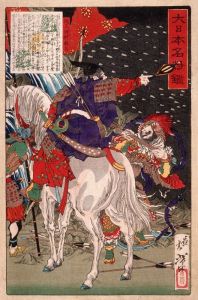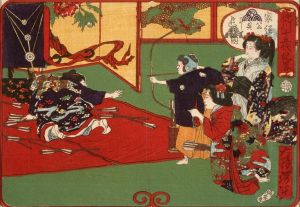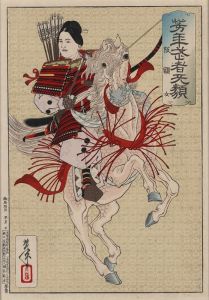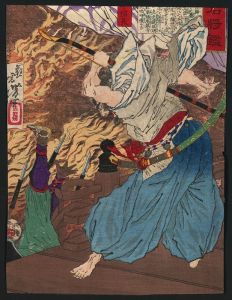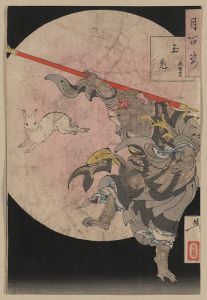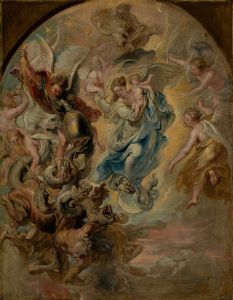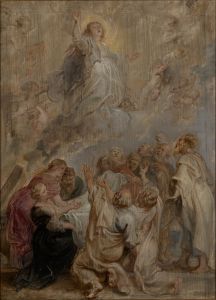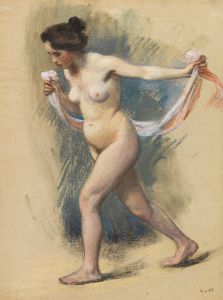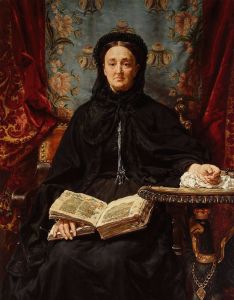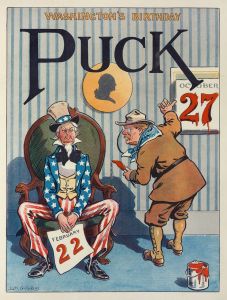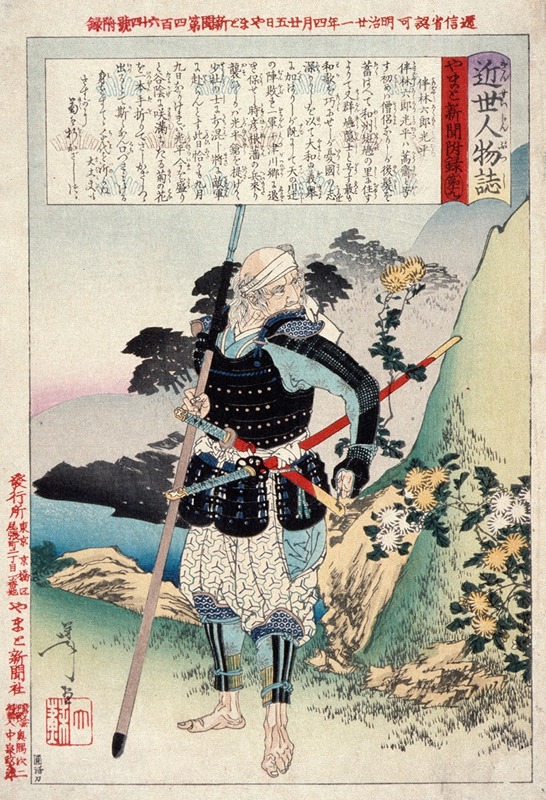
The Old Warrior Tomobayashi Rokurō Mitsuhira
A hand-painted replica of Tsukioka Yoshitoshi’s masterpiece The Old Warrior Tomobayashi Rokurō Mitsuhira, meticulously crafted by professional artists to capture the true essence of the original. Each piece is created with museum-quality canvas and rare mineral pigments, carefully painted by experienced artists with delicate brushstrokes and rich, layered colors to perfectly recreate the texture of the original artwork. Unlike machine-printed reproductions, this hand-painted version brings the painting to life, infused with the artist’s emotions and skill in every stroke. Whether for personal collection or home decoration, it instantly elevates the artistic atmosphere of any space.
"The Old Warrior Tomobayashi Rokurō Mitsuhira" is a woodblock print created by the renowned Japanese artist Tsukioka Yoshitoshi (1839–1892). Yoshitoshi is widely regarded as one of the last great masters of the ukiyo-e tradition, a genre of Japanese art that flourished from the 17th to the 19th centuries. This artwork is part of Yoshitoshi's celebrated series "New Forms of Thirty-Six Ghosts" (Shinkei Sanjūrokkaisen), which was published between 1889 and 1892. The series is notable for its imaginative depictions of supernatural themes, historical figures, and legendary tales from Japanese folklore.
The print portrays Tomobayashi Rokurō Mitsuhira, a historical samurai figure, in a dramatic and evocative manner. In Yoshitoshi's depiction, Mitsuhira is shown as an elderly warrior, his age emphasized by his white hair and weathered face. Despite his advanced years, he retains a commanding presence, symbolizing the enduring spirit and resilience of a seasoned samurai. The composition is dynamic, with Mitsuhira's posture and expression conveying a sense of determination and readiness for battle. The background features atmospheric elements, such as swirling mist or clouds, which enhance the otherworldly and dramatic tone of the piece.
Yoshitoshi's "New Forms of Thirty-Six Ghosts" series reflects his fascination with the supernatural and his ability to blend traditional Japanese aesthetics with innovative artistic techniques. The series was created during the Meiji era (1868–1912), a time of significant cultural and social transformation in Japan. Yoshitoshi's work during this period often explored themes of nostalgia for Japan's feudal past, as well as the tension between tradition and modernity.
The exact historical details of Tomobayashi Rokurō Mitsuhira's life are not well-documented, and much of his legacy is intertwined with folklore and legend. Yoshitoshi's portrayal of Mitsuhira likely draws on these legendary accounts, emphasizing the samurai's bravery and steadfastness. As with many of Yoshitoshi's works, the print combines historical and mythical elements, creating a vivid and compelling narrative image.
This artwork exemplifies Yoshitoshi's mastery of the woodblock printing technique and his ability to convey complex emotions and stories through his art. It remains a significant example of late ukiyo-e and continues to be appreciated for its artistic and cultural value.






